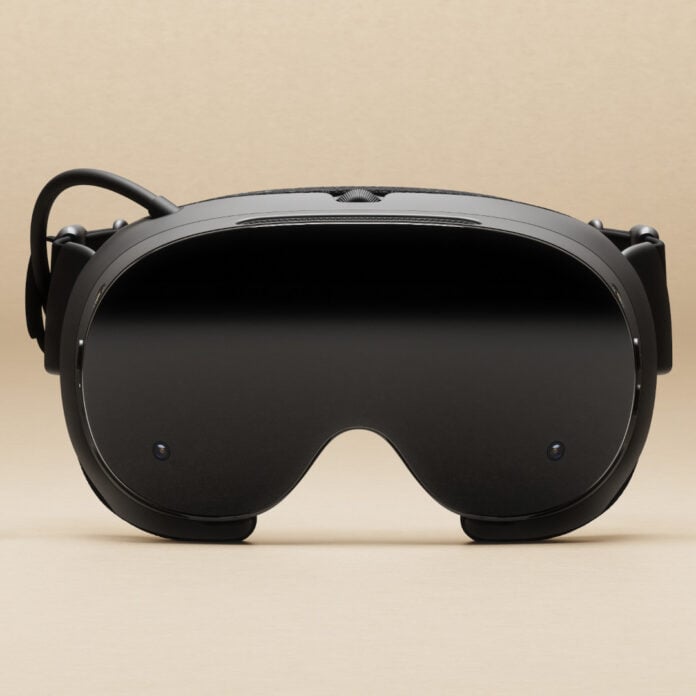Valve just announced a bunch of new hardware, including a new Steam Controller and Steam Machine, but it’s the Steam Frame that’s catching my eye above all. This is the long-awaited successor to the Valve Index, but there’s a world of exciting differences between the two devices. In fact, I currently view the Steam Frame as the most exciting addition to Valve’s portfolio since Steam Deck.
The world of VR has changed considerably since the Valve Index hit the scene back in 2019, and this reflects in the Steam Frame design. Gone are the old ways of lighthouse base stations and bulky cables, making way for built-in camera tracking and 6GHz wireless connections.
In fact, this headset more closely resembles a Quest 3 than its predecessor, both in specification and appearance. That’s no bad thing considering the quality and popularity of that device. Both the Quest 3 and Quest 3S account for a whopping 35% of VR users on Steam at the time of writing, while the Valve Index enjoys a markedly smaller 14.6%.
| Steam Frame | |
|---|---|
| OS | SteamOS |
| Display | LCD pancake lenses 2160×2160 per eye 72-144Hz Up to 110° FOV |
| Cameras | External monochrome (x4) Internal eye trackers (x2) |
| SoC | Snapdragon 8 Gen 3 |
| RAM | 16GB LPDDR5 |
| Storage | 256GB / 1TB UFS microSD card slot |
| Battery | 21.6Whr |
| Weight | 440g |
Without losing ourselves too much in specifications, the Frame arrives with solid internals. The headset packs 2160×2160 pancake lenses, capable of running up to 144Hz and with an FOV of up to 110° FOV. This keeps Valve’s offering more or less in line with a Quest 3 albeit with a slightly sharper display and wider field of view. The device is also lighter than what should be its primary competitor, weighing just 440g with the stock strap.
Like other modern headsets, Steam Frame will arrive with a pre-installed operating system, namely SteamOS. This is the same software you’ll find on Steam Deck, only this time running on a stock Arm SoC instead of a custom x86 APU. However, don’t expect amazing native performance out of that Snapdragon 8 Gen 3. To provide some context, this is the same chip you’ll find in Samsung Galaxy S24 smartphones. Lightweight games should run just fine, but this is a streaming-first headset, meaning your PC will provide any serious processing power.
Using your PC to stream games to a VR headset is nothing new, but Valve is debuting a new feature that should prove transformative to any gaming experience. Enter foveated streaming, which takes inspiration from foveated rendering, but dynamically adjusts bitrate rather than resolution, depending on where your eyes are looking. This approach won’t benefit performance in terms of frames per second, but it should provide a more reliable and responsive video stream, thanks to the extra bandwidth it frees up.

It’s this approach and technology that lead to me believe the Steam Frame is more exciting off the bat than the return of Steam Machines. I already own a relatively powerful gaming computer, complete with a Ryzen 7 7800X3D and GeForce RTX 3080 Ti, that will blow Valve’s companion cube of a PC out of the water. As such, the system is more of a curiosity for me than something I’m keen to add to my setup.
Don’t get me wrong, I’m excited to see how the Steam Machine will shape up. However, I share some of the concerns held by my colleague Ben regarding the capabilities of the system’s internal hardware. Here’s hoping that price is right.
In contrast, Steam Frame looks like an exciting complement to my existing hardware. Not only will the system open the door to bespoke VR experiences, including Half-Life: Alyx and Beat Saber, but it should also provide a means to immerse myself in the rest of my games library.
There’s no word on how much you’ll need to pay to strap a Steam Frame to your head. However, Valve has made clear that the headset will be cheaper than Index, which debuted at $999. This leaves a lot of room for potential pricing, but I believe the system needs to at least match Quest 3’s $499 price tag to be truly competitive.
We should learn more about the Steam Frame in the coming months as the headset’s ‘early 2026’ release window. Until then, make sure you’re following Club386 on Google News for all the latest updates in the world of tech.

